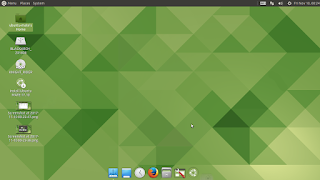Blocklist-Update.sh is a script that I wrote to manage blocklists from bluetack etc to be used in conjunction with Transmission torrent downloader in Linux/MacOS. The script can be taylored to work with Qbittorrent as well, but the placement of the blocklists means you'd have to redirect the blocklist to go somewhere locally manageable as Transmission uses its own blocklist directory in .config. I believe there are about 10 lists there now. It works well for my needs. It can be ran weekly using crontab in standard user profile. To download: blocklist-update.sh To download the others: Github
Now that everything ubuntu has finally reached a point where 17.10 is
as good as stable, It’s time to see what is new, what packages got
upgraded and how many desktop improvements have been made. I usually
don’t spend a long time testing distros, partly because I only have
a low end device at the moment and don’t typically run Vboxes on
it. However, with Ubuntu in the past, I usually find issues within a
couple of hours of running, usually because I knitpick, but also
because in the past, it seems that from 14.04 to 16.04 something was
missing. I’m looking forward to testing 17.10 and editing in my
results here. I normally side with Arch-based distros personally.
Ubuntu Mate is a good place to start. Ubuntu Mate seems stable when
other instances seem less than pleasant to work with. Linux Mint is a
close second in this regard, as it takes the best of Ubuntu and Mate
and puts its own stability into it. Linux Mint adds some nifty
graphical skins to features that Ubuntu actually still has use of the
terminal for. With the switch to Wayland as default, I’m curious to
see how well it perform son my system which usually requires
installation of the proprietary Nvidia driver on most distros. I’ll
start with Ubuntu Mate Artful Aardvark. The wallpaper was very bright
and green and Many applications I tested in the distro were not
really working well, but this was mainly because I did so in a live
environment and not everything was up to date as of yet.
Epiphany-browser was of course, the latest version. Redshift worked
flawlessly, Libreoffice is at 5.4.2.1, and Chromium-browser had
issues right off the bat, but that again may have a lot to do with
running it on a live system. Screenshots are coming. Pantheon works
similarly to Cupertino in the last version, what had me sold was
Mutiny. Mutiny is a desktop style that tries to mimick Ubuntu with
Unity. As with all Ubuntu-Mate distro versions, a plethora of apps
were already installed to get you going. The RAM usage was on par
with xfce at start from a cold boot, but after running a few apps
like firefox etc it went up to over 500 MB according to free -h
command. The themes new set of themes are same as the old with the
exception of the Dark Ambient theme. The default theme is Ambient
which is bright and vibrant. Ambient Dark is definitely easier on the
eyes.



Comments
Post a Comment